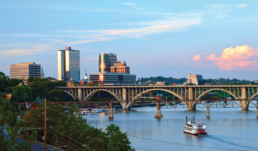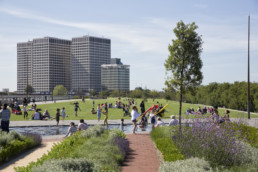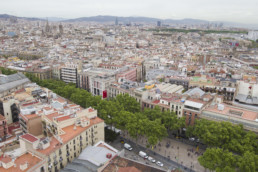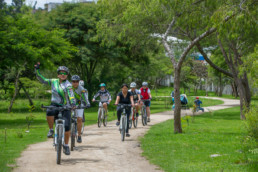Global warming is a major threat to our planet, but particularly to our cities, in which two thirds of the world’s population are expected to live by 2050.
Even as national leaders make the headlines on climate, more and more, cities are the places turning big-picture objectives into practical steps forward to a sustainable future. In fact, the Trump Administration’s decision in June to withdraw from the Paris Agreement only strengthened the commitment of the world’s biggest cities to lower emissions for a low-carbon future.
This commitment is clear in the new Cities100 report, available now. For the third year in a row, Sustainia, C40, and Realdania have collected the 100 best urban solutions to climate change from cities around the world, and the 2017 edition of Cities100 presents some extraordinary cases of city climate action within the categories of energy, adaptation, transportation, mitigation, and waste.
This year’s Cities100 reveals how more cities are beginning to acknowledge the social, economic, and environmental benefits of climate action and adaptation. By taking climate action, cities can simultaneously future-proof against challenges such as overpopulation, air pollution, and extreme weather events, and save trillions of dollars on, for example, energy and health.
Let’s take a closer look at five cities from the new report that are creating greener, smarter, and healthier urban environments while reducing their carbon footprint.

Knoxville – Energy savings for the city’s most vulnerable
Through Knoxville’s Extreme Energy Makeover (KEEM) program, the city’s oldest buildings are getting an energy face-lift for the benefit of the climate and its most vulnerable citizens. By targeting the least efficient properties and the most vulnerable city residents with utility data, and offering free energy efficiency upgrades, Knoxville tackles social inequality while improving climate resilience and reducing emissions. Collectively, the homes upgraded so far in the KEEM program have saved more than 6,055 MWh annually, the equivalent of taking 900 cars off the road.

Rotterdam – Turning the city’s rooftops into a second ground level
In the Dutch city of Rotterdam, unused rooftops have been transformed into multifunctional spaces that improve air quality and biodiversity, produce renewable electricity, retain water to prevent flooding, and provide spaces for people to socialize. The city aims to put solar panels on over 100,000 square feet of rooftops, which could generate 1.25 MW of renewable energy, and build another 850,000 square feet of water-resilient roofs, or blue roofs, which can retain over 500,000 gallons of water. With about 5.6 square miles of unused roof space above the city, this is only the beginning.

Barcelona – Managing trees for a healthier climate – and city
Aside from lowering city emissions, Barcelona’s urban greening program has numerous co-benefits. Through increasing the city’s tree canopy from 5 to 30 percent, Barcelona will enjoy a cooler urban atmosphere, better air quality, and increased biodiversity. Furthermore, the shade provided by trees can beat the heat in the hot summer months and reduce energy use for air conditioning, with expected savings of $10 million annually. Lastly, Barcelona’s trees are expected to store 113,000 metric tons of carbon per year.

Jakarta – Water-absorbing parks with social and climate benefits
Jakarta has vowed to keep its 10 million inhabitants safe from heavy rain-induced flooding by building 3,000 water-absorbing child-friendly parks by 2022. With the project already underway, flood duration has been reduced from three days to only three hours per flood event. Additionally, the parks are increasing the quality of life for the city’s children while providing local jobs, improving air quality, and reducing CO2 emissions through carbon storage. With a plan to increase its green open spaces from 10 percent to 30 percent in 2030, the city will reduce its environmental footprint and transform itself into a more attractive place to live.

Loja – Bicycles and electric taxis for clean mobility
In Ecuador, the city of Loja has cut air pollution, improved public health and reduced its carbon emissions by replacing fuel-driven taxis with electric vehicles and promoting cycling amongst the population. So far, the city has introduced a fleet of 30 taxis as part of the city’s clean transportation strategy, which also includes the construction of new bicycle lanes and 45 miles of ecological trails in and outside the city. Since the mobility projects started in 2016, Loja has reduced its carbon footprint by an estimated 5,000 tons of CO2.
This article was originally published on the Climate Reality Project blog.
You can find many more incredible urban climate solutions from the new Cities100. They are available right here on the Explorer where you can also find the 200 solutions from the previous Cities100 reports.
Want to read the whole Cities100 report, including Mayor of Washington, D.C. Muriel Bowser’s foreword? Read it online via Issue.
Author: Joachim Marc Christensen

